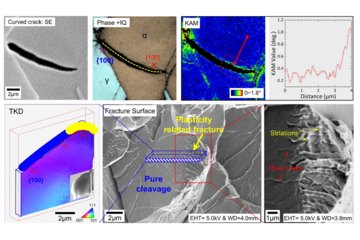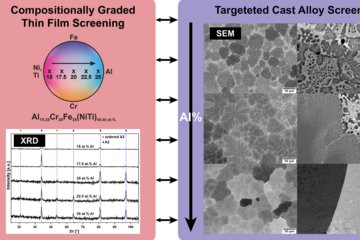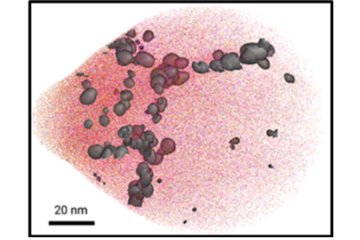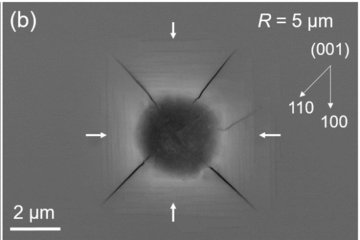All genres
301.
Talk
Phase equilibria of Laves phases in ternary Nb–X–Al systems with X = Cr, Fe, Co. Discussion Meeting on Thermodynamics of Alloys - TOFA 2008, Krakow, Poland (2008)
302.
Talk
The mechanical properties of Nb–TM Laves phases - Sample preparation and the composition dependence of the microhardness in Nb–Fe Laves phases. Workshop "The Nature of Laves Phases XI", MPI für Eisenforschung, Düsseldorf, Germany (2008)
303.
Talk
Development of high-temperature titanium and nickel aluminium intermetallics based on microgravity processing. Space for Innovation - Industry Forum for Material Research and Microgravity, Fachtagung "Materialforschung und Schwerelosigkeit für Industrieanwendungen", MPI für Eisenforschung (2008)
304.
Talk
High-performance soft Magnetic iron-silicon alloys for industrial applications processed under microgravity. Space for Innovation - Industry Forum for Material Research and Microgravity, Fachtagung "Materialforschung und Schwerelosigkeit für Industrieanwendungen", MPI für Eisenforschung, Düsseldorf (2008)
305.
Talk
Creep strength of centrifugally cast Al-rich TiAl alloys. 11th Int. Conf. on Creep and Fracture of Engineering Materials and
Structures
, Bayreuth, Germany (2008)
306.
Talk
Investigation of the crystallographic structure of the ε phase in the Fe–Al system by high-temperature neutron diffraction. American Conference on Neutron Scattering (ACNS 2008), Santa Fe, New Mexico, USA (2008)
307.
Talk
Phase equilibria and phase transformations of Laves phases in the Cr–Ti binary system. JIM Annual Spring Meeting 2008, Tokyo, Japan (2008)
308.
Talk
Properties of cast Al-rich Ti–Al alloys. TMS Annual Meeting 2008, New Orleans, LA. USA (2008)
309.
Talk
Composition dependence of nanohardness and Young's modulus in diffusion couples containing Laves phases. Workshop "The Nature of Laves Phases X", Dresden, Germany (2008)
310.
Talk
Processing of eutectic NiAl–Cr and NiAl–Re alloys under microgravity. Meeting "TEMPUS Parabolic Flight September 2007", Bonn, Germany (2008)
311.
Talk
The variation of the c/a ratio in hexagonal Laves phases. Workshop "The Nature of Laves Phases X", Dresden, Germany (2008)
312.
Talk
THALU + silicon: Recent experimental ternary phase diagram data. Thermodynamics of Alloyed Aluminides, THALU, Interlaken, Switzerland (2007)
313.
Talk
Characterization of the microstructure of Al-rich TiAl-alloys by combined TEM imaging techniques. 33rd Conference of the DGE Deutsche Gesellschaft für Elektronenmikroskopie e.V., Saarbrücken, Germany (2007)
314.
Talk
Point and layer defects in transition-metal based Laves phases. EUROMAT 2007, Nürnberg, Germany (2007)
315.
Talk
Phase equilibria in the Nb–Cr–Al system at 1150, 1300 and 1450 °C. Workshop "The Nature of Laves Phases IX", Stuttgart, Germany (2007)
316.
Talk
Unusual mechanical behaviour of the intermetallic phase Nb2Co7. Workshop "The Nature of Laves Phases IX", Stuttgart, Germany (2007)
317.
Talk
Mechanical properties of centrifugally cast Al-rich TiAl alloys. EUROMAT 2007, Nürnberg, Germany (2007)
318.
Talk
Casting and properties of Al-rich Ti–Al alloys. 11th World Conference on Titanium, Ti-2007, Kyoto, Japan (2007)
319.
Talk
Microstructure, atomic ordering, surface tension, and viscosity of μg-processed iron-aluminium-silicon alloys with up to 6.5 wt.% Al+Si. Meeting "TEMPUS Parabolic Flight 2006", DLR Bonn, Germany (2007)
320.
Talk
Phase equilibria in the Nb–Cr–Al system. Workshop "The Nature of Laves Phases VIII", Düsseldorf, Germany (2007)











